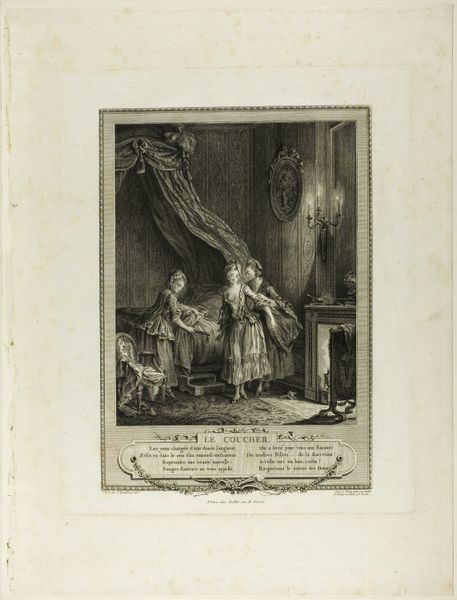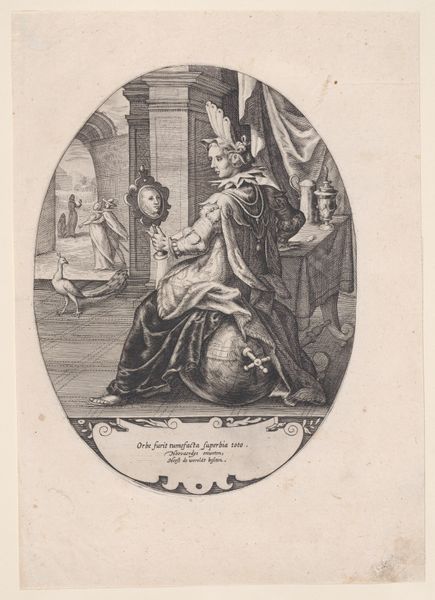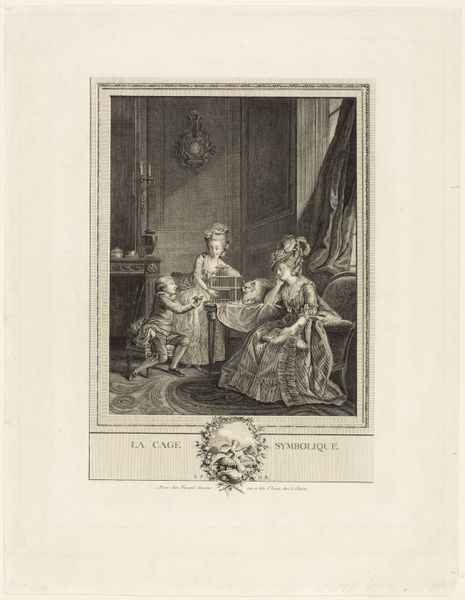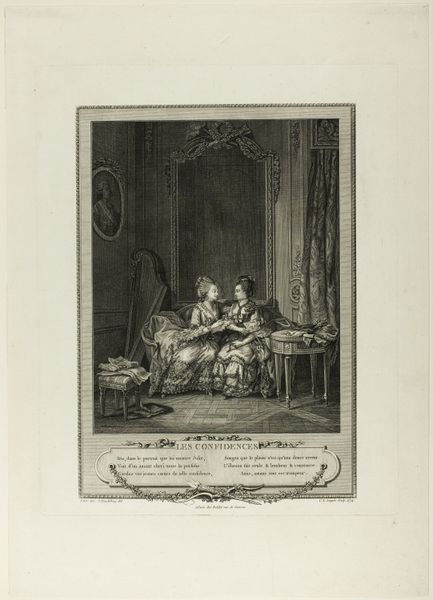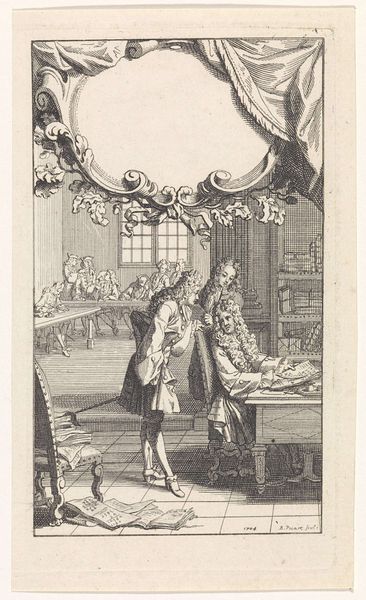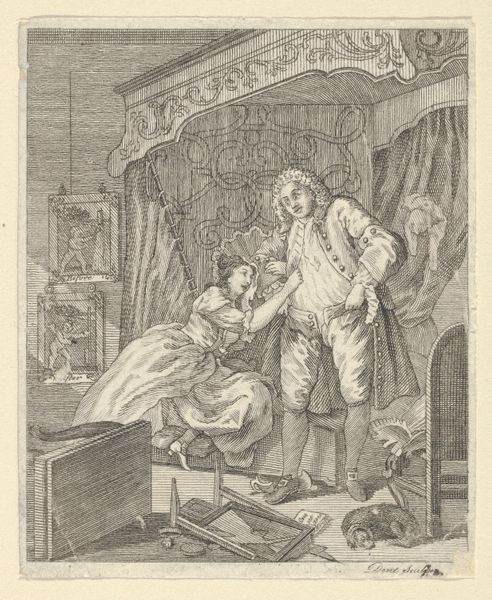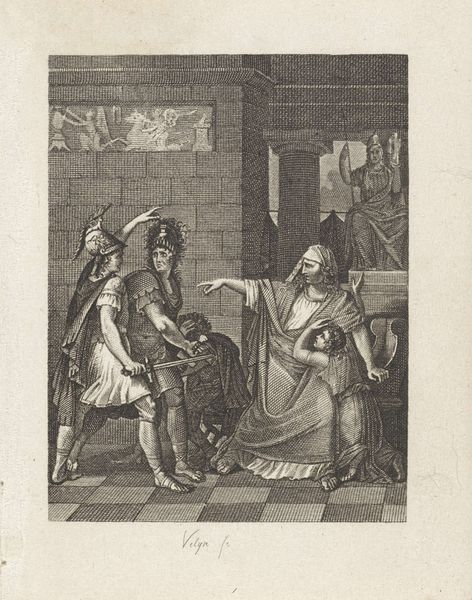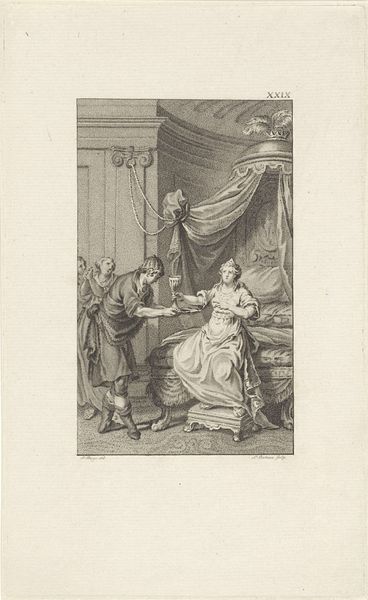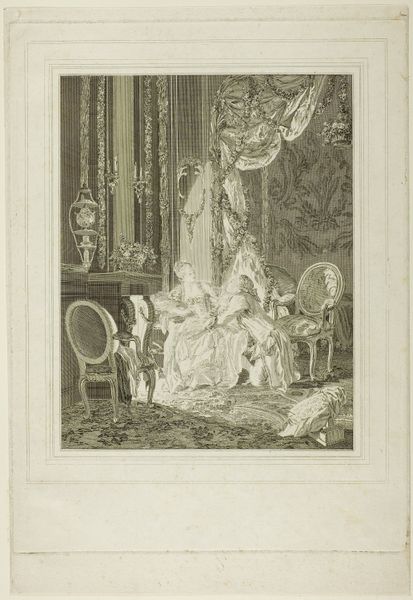
Weduwe Bentinck met haar kinderen bij de lijkbaar van haar gemaal, 1781 1782
0:00
0:00
barentdebakker
Rijksmuseum
Dimensions: height 112 mm, width 71 mm
Copyright: Rijks Museum: Open Domain
Editor: This engraving, "Weduwe Bentinck met haar kinderen bij de lijkbaar van haar gemaal, 1781," created in 1782 by Barent de Bakker, is striking. The rigid lines and the somber scene really evoke a sense of loss and perhaps stoicism. What stands out to you in terms of how it was made and its purpose? Curator: I'm interested in the means of production, especially with engravings. It's not just about aesthetic beauty, but about the social role prints like these played. This print, as a multiple, offered a tangible object for disseminating ideas, a kind of propaganda in times of social upheaval. Look at the tools displayed near the coffin - the sword, and coat of arms- and think about what this reveals about their family's power, the values they upheld and what the public may have been told they stood for.. Editor: Propaganda, really? I hadn't thought about it that way. I was focusing on the grief of the widow, depicted through the style of Neoclassicism which gives it a stoic touch, in my opinion.. Curator: But where was that stoicism made visible? To whose benefit? Focus not just on *what* is shown but *how* it's shown, and *why*. Think about the role of the engraver, de Bakker himself: he is literally producing and circulating not just art but an image linked to power and nation. Was the goal mourning or reinforcement? Editor: That makes a lot of sense. It reframes how I view the piece. It's less about individual emotion and more about manufactured imagery serving a social purpose. Curator: Exactly. Recognizing the production process transforms this from a simple depiction of grief to a commentary on social hierarchies and control through material culture. It gives us clues about consumption in a historical moment. Editor: I will now view this through a more critical and analytical lens. Thanks for your materialist point of view; it added a very interesting dimension to my perspective. Curator: Likewise. Paying attention to materials and modes of production provides important, fresh understandings of art and its position in society.
Comments
No comments
Be the first to comment and join the conversation on the ultimate creative platform.
